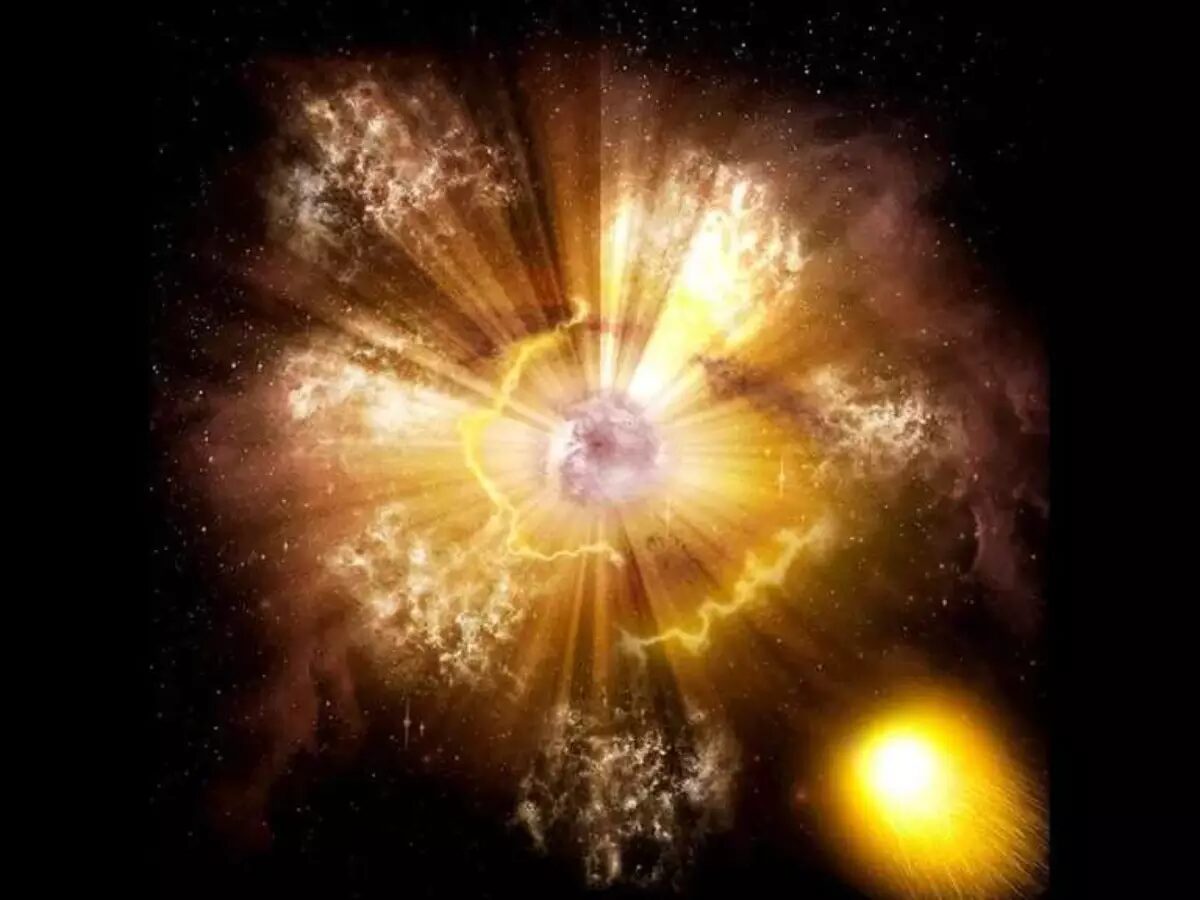
According to solar physicist Joan Schmelz (USRA) and her husband and collaborator, radio astronomer Gerrit Verschuur, the stellar explosion took place some 100,000 years ago, around the time Homo sapiens left Africa and migrated into Asia and Europe.
High-velocity clouds (HVCs) are generally thought to be huge, massive, and many thousands of light-years away. But because there's no good way of measuring their distance, their origin is still unclear. Most astronomers believe they have been blown out of the Milky Way by a process known as a galactic fountain. Alternatively, they could be intergalactic clouds of primordial gas falling prey to our galaxy's gravity.
However, a radio-bright HVC known as MI, which is speeding towards us at 120 kilometers per second (268,000 mph), may be much closer - and thus much smaller and less massive — than previously thought. In a study to appear in The Astrophysical Journal (arXiv preprint available here), Schmelz and Verschuur argue that it was ejected by a dying star, and subsequently accelerated when that star went supernova.
The couple's interest was piqued when they discovered that MI's sky position, in Ursa Major, coincides with an 80-light-year-wide spherical bubble in the Milky Way's interstellar medium. A supernova might have carved out this cavity, and now Schmelz and Verschuur think they have identified the blast's remnant: the invisible companion of the naked-eye star 56 Ursae Majoris, which sits a few degrees south of the Big Dipper's bowl.
56 UMa is known to be a spectroscopic binary, explains Verschuur, and in a study in press at Nature Astronomy, a team including Belgian astronomer Alain Jorissen argues that the companion could well be a neutron star rather than a white dwarf, as had been thought before. "MI was probably a 'clump' or collection of clumps that was ejected from the progenitor star as part of its mass-loss phase," says Verschuur. "It rode the supernova blast wave to gain speed."
56 UMa is 530 light-years away. If MI was blown in our direction, its current distance would be some 490 light-years, and it would contain just 3 Suns' worth of hydrogen.
"It certainly is plausible that this particular HVC results from a nearby supernova," says Felix Lockman (NRAO). However, he adds that there are other HVCs that contain few heavy elements or dust. "These are certainly not the product of a supernova," he says.
Filippo Fraternali (University of Groningen, the Netherlands) also has doubts. "My first reaction was: OK, it could be," he says. "However, I don't think that this can explain other HVCs that are considered to be at very large distances, as the authors of this paper are trying to suggest. Moreover, the interstellar medium of the Milky Way is full of cavities, so the association with MI may in fact be a chance alignment."
Finding the spectral fingerprint of the cloud in the light of a not-too-distant background star might settle the issue, Fraternali says. "That would definitely prove that the cloud is indeed very close to us."



Reader Comments